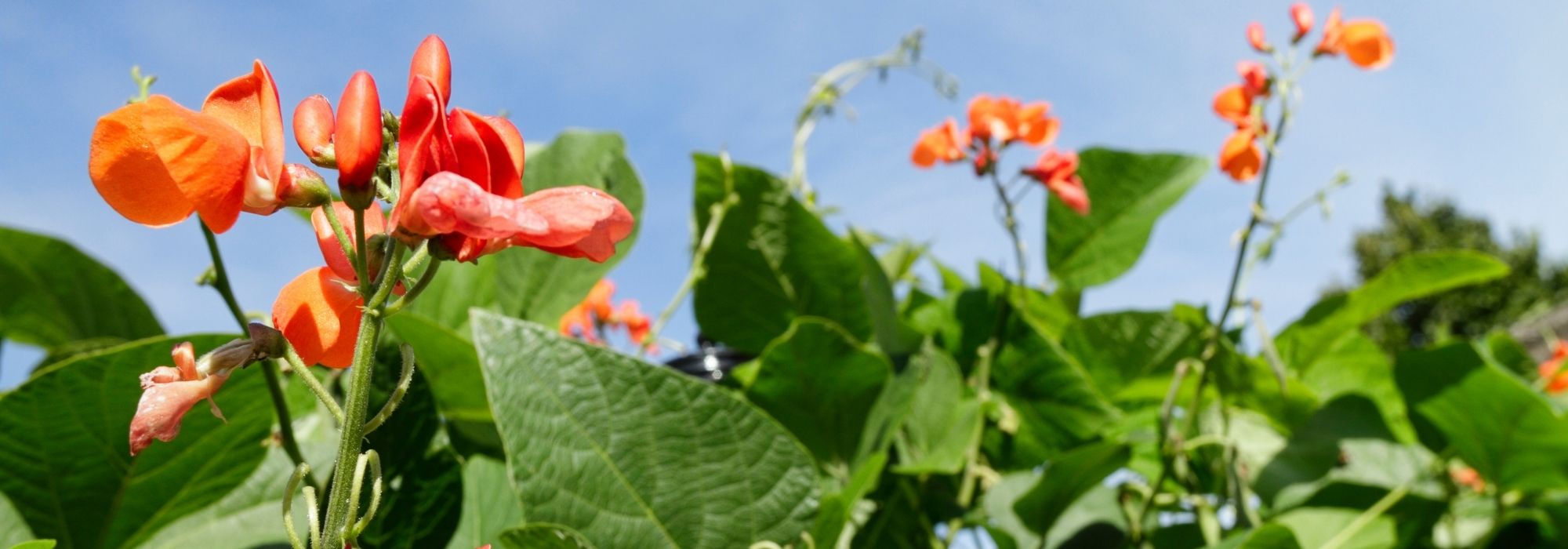
The Spanish bean: sowing, growing, and harvest
Contents
The Spanish bean in a nutshell
- A cousin of our common beans (Phaseolus vulgaris), a member of the Fabaceae family, the runner bean (Phaseolus coccineus) originates from the high plateaus of Central America.
- This herbaceous perennial, though frost-tender, is cultivated as an annual in our regions.
- The runner bean is a climbing plant that produces voluble stems reaching up to 4 metres in length.
- It is both an ornamental plant, thanks to its lovely clusters of scarlet flowers, and a vegetable, as its pods can be eaten fresh or dried.
- Its sowing and maintenance are straightforward in any good garden soil.
The word from our expert
Literature tells us that the runner bean attracts hummingbirds! Admittedly, the chances of spotting one in your garden are slim. Nevertheless, you can still grow the runner bean (Phaseolus coccineus) for its stunning clusters of scarlet-red flowers. These flowers are also pollinator-friendly and will delight (in our regions!) bees and bumblebees.
A particularly lush climbing plant, the runner bean can twine freely around a trellis or pergola. And you’ll also enjoy its long, edible pods, which can be eaten just like our common beans (Phaseolus vulgaris). As for the seeds, beautifully variegated in a range of colours depending on the variety, they boast a delicious flavour.
Native to the highlands of Central America, the runner bean is a perennial plant that produces fleshy roots, similar to tubercles. In our latitudes, frosty temperatures have turned the runner bean into an annual plant, surprising in more ways than one, yet deserving of a prominent place in our Western gardens.
Description and Botany
Botanical data
- Latin name Phaseolus coccineus
- Family Fabaceae
- Common name runner bean, scarlet runner bean, multiflora bean, fire bean
- Flowering summer
- Height up to 4 metres
- Exposure sunny
- Soil type ordinary
- Hardiness not hardy
Little known in France, the runner bean is nonetheless the third most cultivated species of beans in the world. In many South American or Mediterranean countries, people enjoy the runner bean either as long green pods or in the dried form of its seeds.
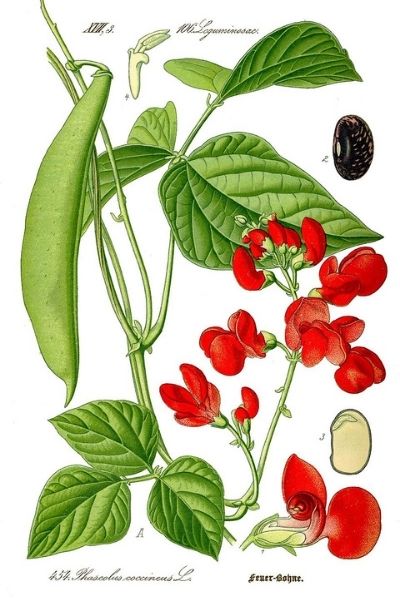
Botanical illustration
A member of the Fabaceae family, Phaseolus coccineus is rich in a multitude of varieties, all derived from a wild variety still found in the humid marshlands of northern Mexico. It is in Central America that the runner bean originates, from Honduras, Guatemala, and Mexico. Archaeological excavations have uncovered seeds of the wild variety in Durango and Puebla, and in the caves of Tamaulipas in Mexico, where the Anahuac peoples gradually domesticated it.
It was probably in the 16th century that the runner bean made its way to European soil, brought by the Spanish, along with our green beans (Phaseolus vulgaris). By the 18th century, it was an integral part of English gardens, adorned with its strikingly coloured flowers. It is this very bright red that attracts hummingbirds living in the deep valleys of the Mexican mountains. An American ornithological site even lists the runner bean among the plants most visited by hummingbirds. In our regions, we will have to make do with bumblebees, honeybees, carpenter bees, and other pollinating insects that also appreciate the flowers of the runner bean. It is these insects that ensure pollination and, consequently, fruiting.
The runner bean is a perennial plant, cultivated as an annual in our regions due to its lack of hardiness. It is indeed endowed with a tuberised taproot, similar to the tubers of dahlias. These fleshy roots are rich in starch (but also in toxic substances) and are even part of the diet of certain Central American ethnic groups.
This ornamental and food plant benefits from a climbing habit. Its voluble stems twist and twine around any support provided, such as trellises, wire mesh, pergolas, or fences. They can reach up to 4 metres in length, more reliably 2.5 to 3 metres.
Its deciduous foliage is medium green. The alternate, trifoliate, and ovate leaves end in a point (acuminate), resembling a heart shape. They feature light veins. Some varieties have slightly purplish foliage on the underside.
We have already emphasised this, but the flowering is remarkable and alone justifies inviting the runner bean into your garden. From June to September, the plant is covered with clusters about twenty centimetres long, made up of bright scarlet-red papilionaceous flowers. Other varieties bloom in red and white, orange, or white.
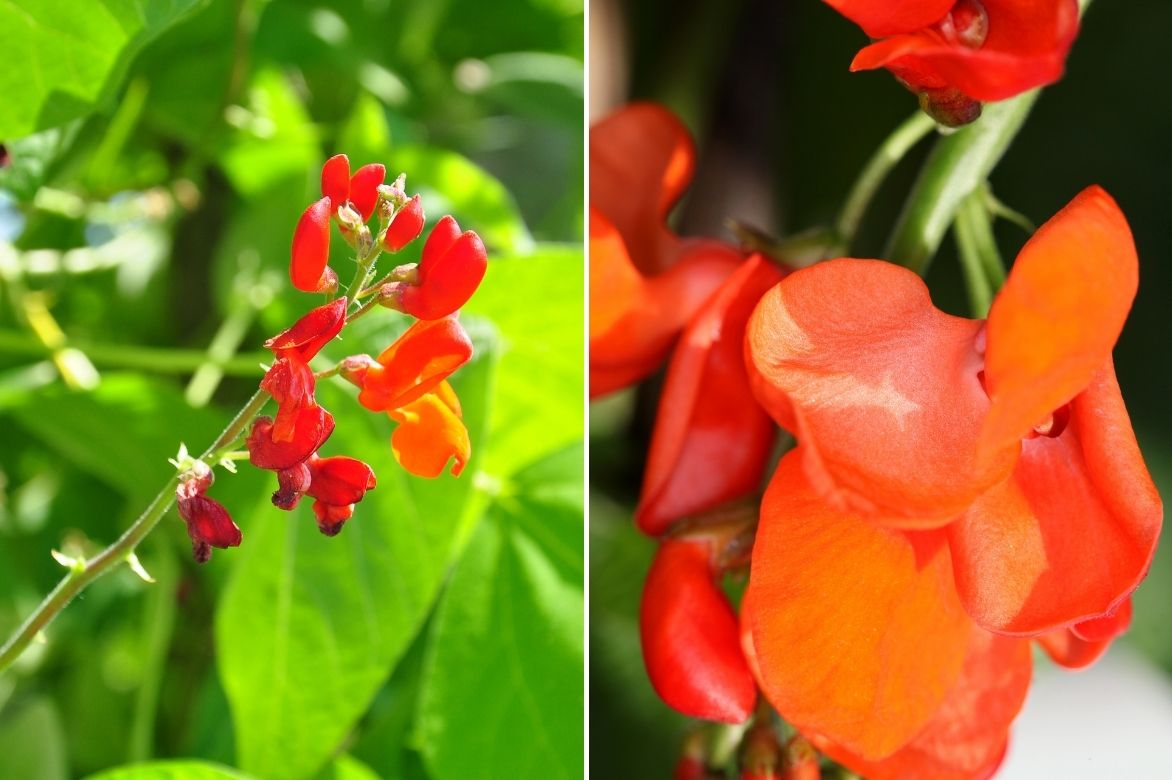
The flowers of the runner bean can take on scarlet-red, orange, or bicoloured hues
These flowers give rise to long edible green pods, flat at first, then swollen as they fill with seeds in two dehiscent valves, of various colours depending on the variety. White marbled with red, pink speckled with red, bronze, brown, violet-black… these seeds are adorned with original colours.
But their originality does not stop there, as these runner bean seeds are said to be hypogeous in germination. Specifically, unlike common beans, during germination, the cotyledons remain in the soil while the stem emerges, already topped with the first leaves. In common beans, the cotyledons emerge from the soil, attached to the stem.
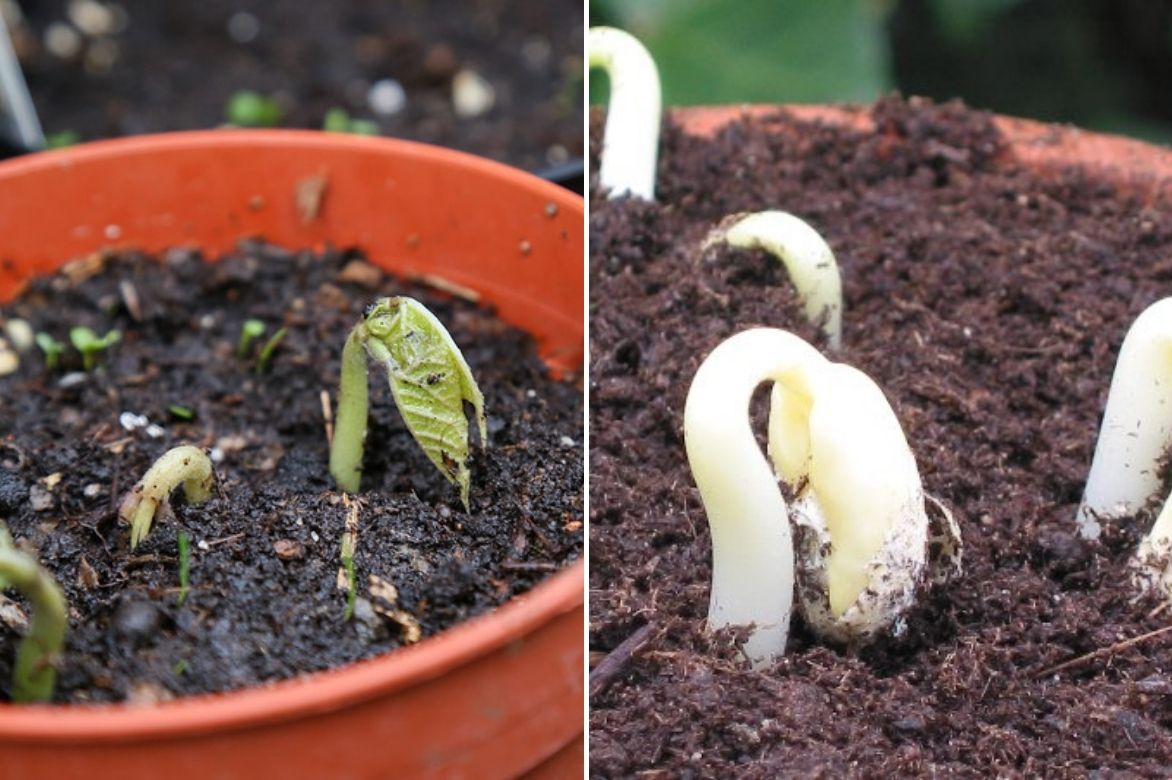
During germination, unlike common beans (on the right), the cotyledons remain in the soil.
The runner bean likely inherits this specificity from its mountainous origins, around 2000 to 3000 metres above sea level. Similarly, the seeds germinate at relatively low temperatures, around 15 to 17 °C. It takes about 4 to 5 months for the seeds to reach ripeness.
The different varieties of runner beans
There are hundreds of varieties of runner beans, derived from local forms cultivated around the world. Each has different characteristics, with some varieties grown more for their ornamental appeal, others for the consumption of their pods or the harvest of their seeds.
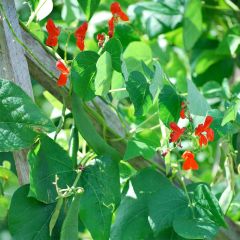
Runner Bean Scarlet Emperor - Ferme de Sainte Marthe Seeds
- Flowering time June to September
- Height at maturity 3 m
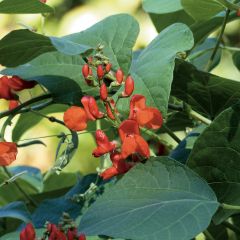
Runner Bean Prijswinner - Dutch Red
- Flowering time June to August
- Height at maturity 4 m

Runner Bean Enorma
- Flowering time June to September
- Height at maturity 3 m
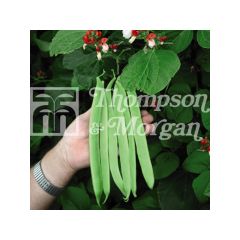
Runner Bean Spanish Bean St. Georg
- Flowering time June to September
- Height at maturity 4 m
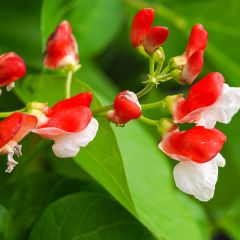
Runner Bean Hestia
- Flowering time June to September
- Height at maturity 45 cm
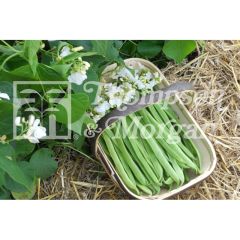
Runner Bean Moonlight
- Flowering time June to September
- Height at maturity 4 m
Discover other Spanish Beans
View all →Available in 1 sizes
Available in 1 sizes
Available in 1 sizes
Available in 1 sizes
Available in 1 sizes
Available in 1 sizes
Available in 1 sizes
Available in 1 sizes
Available in 1 sizes
Available in 1 sizes
The sowing of runner beans
Where to Sow?
Spanish beans are not particularly demanding when it comes to growing conditions. A good, rich, well-drained garden soil is perfectly sufficient for them. However, they also tolerate cooler soils. The soil should be loosened and cleared of weeds and stones.
Spanish beans enjoy a sunny position, except in regions with hot summers, where they will need partial shade. On the other hand, provide them with a sheltered spot away from strong winds.
When to Sow?
In open ground, Spanish beans can be sown as soon as the risk of frost has passed, around mid-May north of the Loire, and in April further south. Native to the mountains of Central America, Spanish beans germinate at temperatures between 15 and 20 °C.
You can also opt to sow them indoors in regions with longer winters. Since Spanish beans have a relatively long growing cycle (around 90 to 100 days from sowing to harvesting immature pods), you can sow them as early as March in a heated frame. Later, simply transplant them once the frosts are over.
How to Sow?
Like other beans, Spanish beans are sown in clusters of 3 to 4 seeds, spaced 50 cm apart. If sowing in rows, leave at least 80 cm between each furrow. The seeds should be planted about 5 cm deep.
Keep the soil moist until the seeds germinate, which usually takes about ten days after sowing.
Read also
How to grow beans in a pot?The care of runner beans
The priority for scarlet runner beans is providing supports if you’ve decided to grow them in the vegetable garden. You can also choose to let them climb along a trellis or over a pergola to shade a terrace. Either way, in the vegetable garden, supports are essential. Several solutions are available to spark your imagination: teepees or A-frames to amuse the children, using strings stretched between stakes, reinforcing bars, or bamboo, with a trellis netting, or even chicken wire. The stems easily twine around their supports.
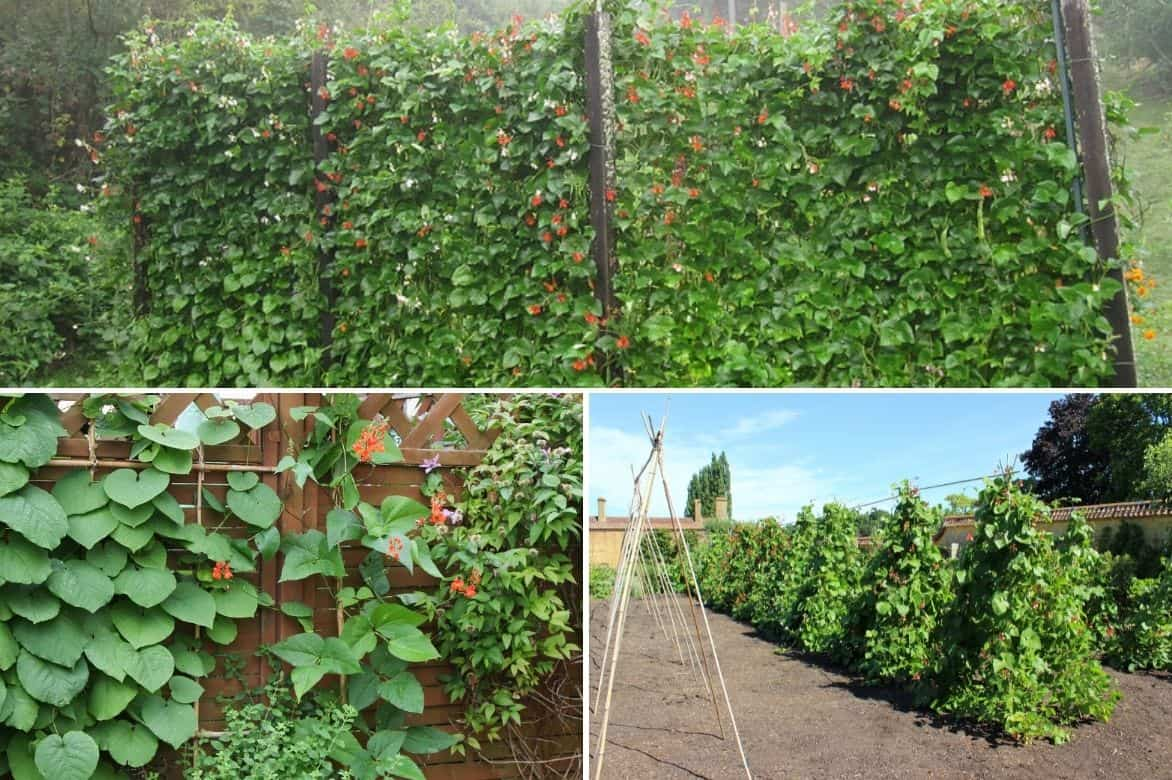
There are countless ways to support scarlet runner beans
Watering should be regular in hot weather, especially when the flowers are turning into pods. Regular watering also prevents the flowers from dropping. To reduce the need for watering, don’t hesitate to mulch. Similarly, hoeing should be done regularly.
Hilling is also recommended once the young plants have reached 15 to 20 cm.
While less susceptible to common bean diseases, scarlet runner beans can still suffer from aphid infestations, which can weaken the plant. Natural predators like ladybirds help manage the infestation. Virginie also shares her secrets for identifying and treating aphids.
As for the young plants, they are highly coveted by slugs. Feel free to check out the 7 ways to effectively and naturally combat these voracious pests.
Good companion plants for runner beans
As a Fabaceae, in the vegetable garden, the Spanish bean thrives alongside potatoes, beetroot, carrots, aubergines, sweetcorn, and squashes. However, planting it alongside alliums (garlic, shallots, onions, and leeks) is not advisable, nor is planting it near peas.
If you grow Spanish beans purely for ornamental purposes, pair them with morning glories, sweet peas, corkscrew flowers (Phaseolus caracalla), or nasturtiums.
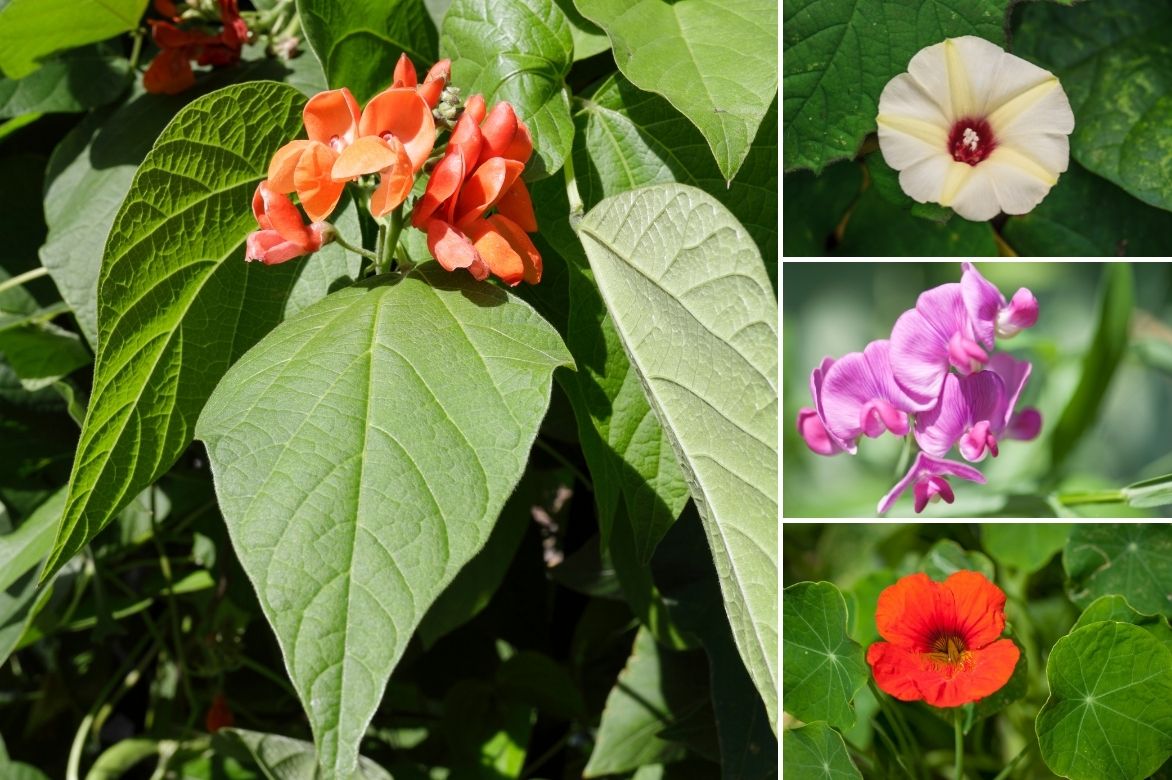
Paired with morning glories, sweet peas, and nasturtiums, Spanish beans will create a beautiful, colourful display or cover an unsightly wall.
The harvest, the storage of runner beans
There are two periods for harvesting Spanish beans. The first occurs when the pods are formed in the same way as other beans. Depending on the variety, the pods are picked when they reach 15 to 20 cm in length. Harvest before the seeds form, as the pods quickly become stringy. As long as they are flat, the pods are excellent. When they grow larger, they can be cut into pieces for cooking.
If you harvest your beans regularly, the plant will be encouraged to produce new pods. These immature beans can be stored for 5 days in the refrigerator, and they can be blanched and frozen.
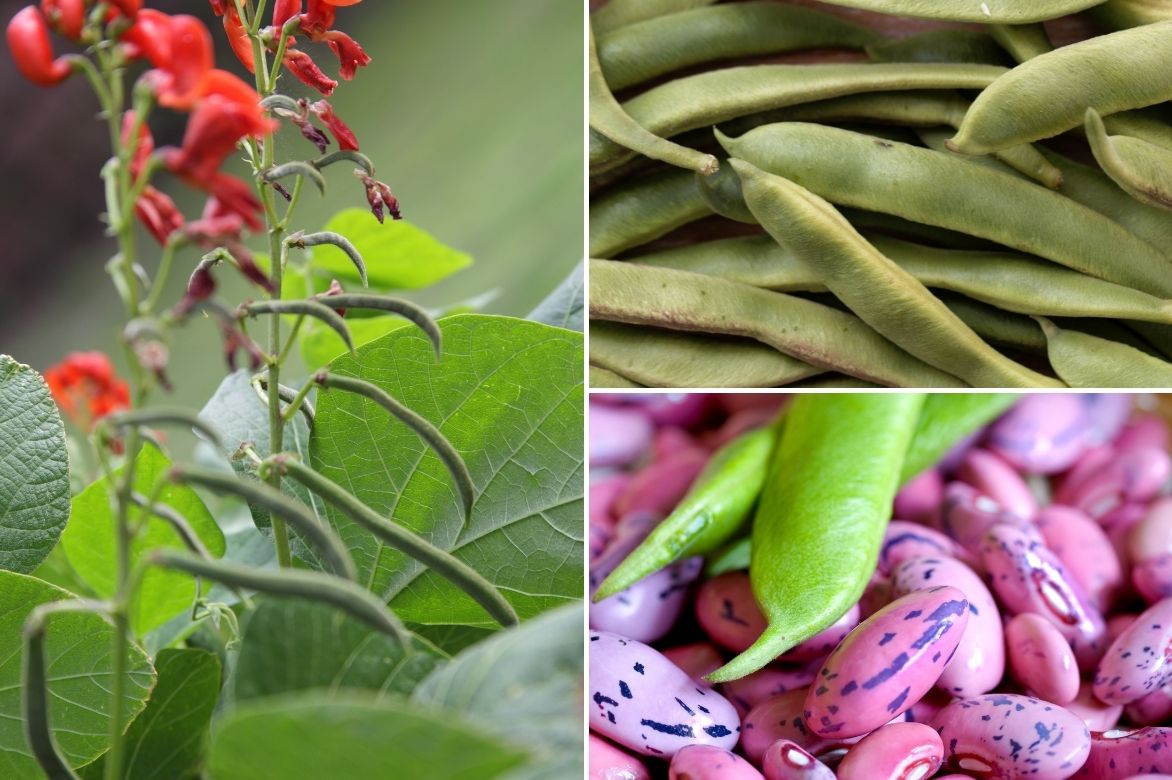
Spanish beans are harvested at the immature stage when they are still flat or dry.
About 4 to 5 months after sowing, around October, Spanish beans can also be harvested when the pod is dry. This yields beautifully coloured dried beans, often as large as a €2 coin.
The Spanish Beans: From Garden to Plate
Spanish beans can be eaten like other beans. Picked very young, they can be prepared like fillet beans or mangetout, steamed or boiled in water, then garnished with tomatoes, onions, or garlic. When larger, cut them into chunks for cooking. They can also be stir-fried in a wok with parsley.
Dried Spanish beans are used in soups, purées, or mashed dishes, often with a Spanish-style tomato sauce. It is recommended to soak them in water overnight to make cooking easier.
- Subscribe!
- Contents
































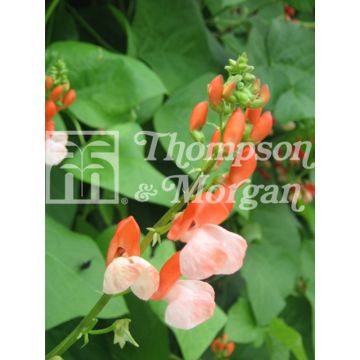
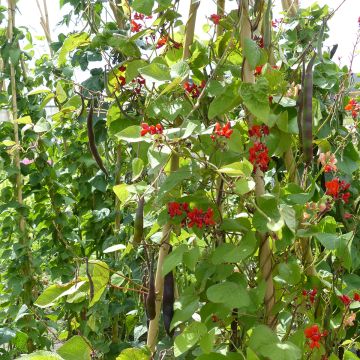



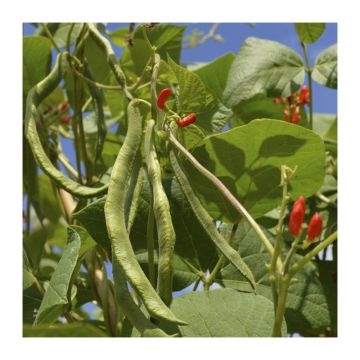
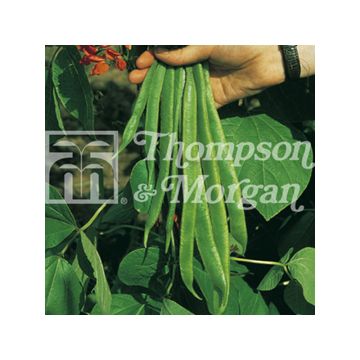
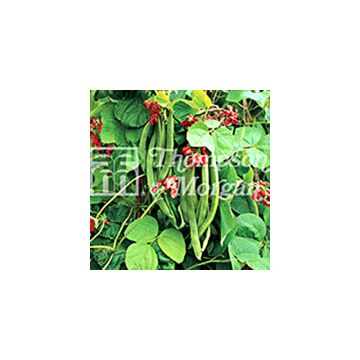

Comments